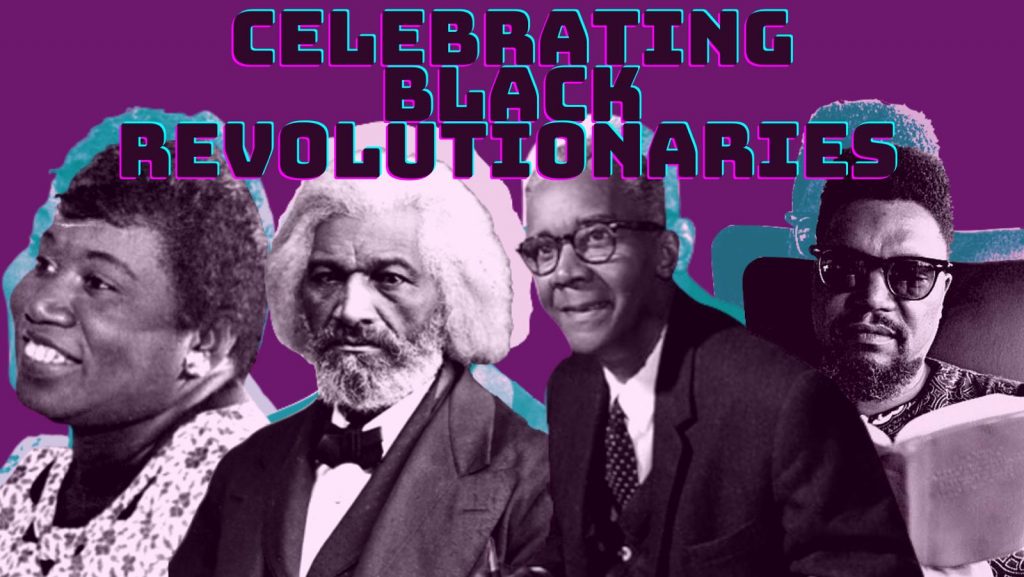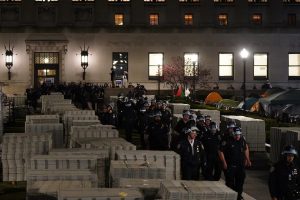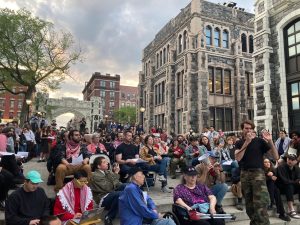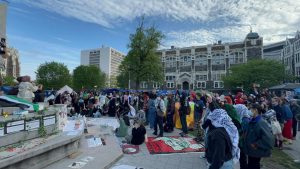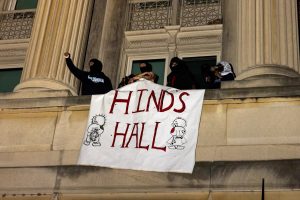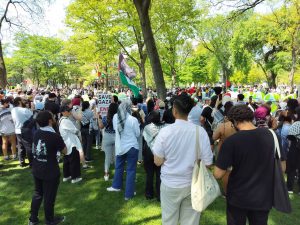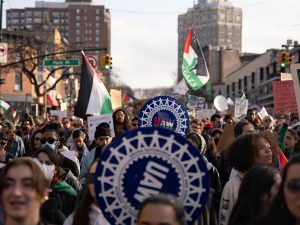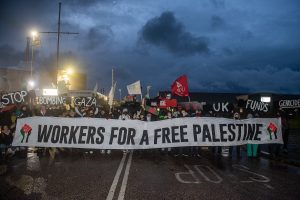In 1935, Ella Baker and Marvel Cooke wrote a historic article on the exploitation of domestic workers, “The Bronx Slave Market,” in which they described the daily life of Black women in the middle of the Great Depression. These women would line up on city blocks, rain or shine, to sell their domestic labor for meager wages. This was the context within which Mae Mallory developed her revolutionary thinking and what she herself called her “maladjusted” politics.
Mallory, an activist and organizer best known for her support of school integration and armed self-defense, spent her life fighting for Black liberation and self-determination. Falsely accused of kidnapping a white couple in 1961, she spent several years in prison, where she wrote insightful reflections on her experiences and society. The Marxist underpinnings of her early political education and her fight for civil rights ineluctably led her to an anti-imperialist perspective. In her later years, she regularly joined struggles against exploitation in the United States and abroad. Until her death in 2007, “she was a persistent advocate for self-defense and the voices of working-class black women in the fight for civil rights” and an important figure in understanding the black radical tradition.
Formative Years
Mae Mallory was born in Macon, Georgia in 1927. As she grew up to become a self-confident young person, her mother knew her personality would not fare well in the Jim Crow South. Like many others during the period of the Great Migration, she moved north with her mother, settling in Harlem when she was 12 years old. In New York City, it is likely Mallory herself stood on the corner of 167th Street and Jerome Avenue in the Bronx, just as Baker and Cooke had described, waiting in the frigid cold or sweltering heat to be beckoned for a few hours of work in the some white family’s home. The work was dehumanizing, and full compensation was never guaranteed — according to Baker and Cooke, after completing their work, domestic workers would often be sent home without any pay at all.
“An [upper middle class] white woman I used to babysit for when I was but a teenager once said that having me around was like having a pet,” Mallory later wrote in “Of Dogs and Men,” her letter from prison. Then as now, Black women were more likely to do domestic work and to be hyper-exploited.
Mallory did not restrict herself to domestic work. After she took her two children, Patricia and Keefer, Jr., and left her husband, she held down a variety of jobs to make ends meet. She saw factory work as offering more autonomy than the unpredictability of housework, but such jobs had different obstacles. For instance, Black women, if they were hired at all, were paid the lowest wages and were largely prohibited from joining unions. Still, Black women were a critical part of the workforce, and about half of Black working women held the lowest-paid factory and domestic jobs in the 1940s and 50s — and were often the “last hired, first fired.” By Mallory’s time, organizing efforts were well underway to demand better wages and fight for better conditions — and that is likely where she first encountered organized and revolutionary politics.
Experiencing both racial and class antagonism helped Mallory articulate with astute clarity how exploitation was bound up with both. In “Memo from a Monroe Jail,” she described the harassment of Black residents by poor whites in Union County, North Carolina: “The whites are brainwashed into believing that they don’t need surplus food or free school lunches. They are sent to fill their empty bellies by committing mayhem on those in the black community.” She understood that the indoctrination of poor, deprived whites, convinced of their racial superiority despite their material conditions, was necessary to maintain widespread economic exploitation. Early colonial lawmakers invented this racial division to suppress the power of united workers fighting against their common class enemy. These conditions were the backdrop to Mallory’s political education, revolutionary vision, and capacity to mobilize members of her community in a common struggle.
Early Political Work: School Desegregation
Though Mallory dipped her toes in numerous political parties and organizations, she did not restrict herself to any one group. Despite being deeply influenced by Marxism and Black women of the U.S. Communist Party (CPUSA), Mallory’s involvement in political work came as that party’s influence in the United States was waning both as a result of increasing attacks in the aftermath of World War II and its slavish support for Stalin, which especially in the mid-1950s began to shatter its credibility. She was, though, briefly a CPUSA member, but she rejected the organizational structure and often paternalistic nature of the party. She had the same problem with other organized groups, including the Nation of Islam, United Nationalist African Movement, and the Cultural Association for Women of African Heritage.
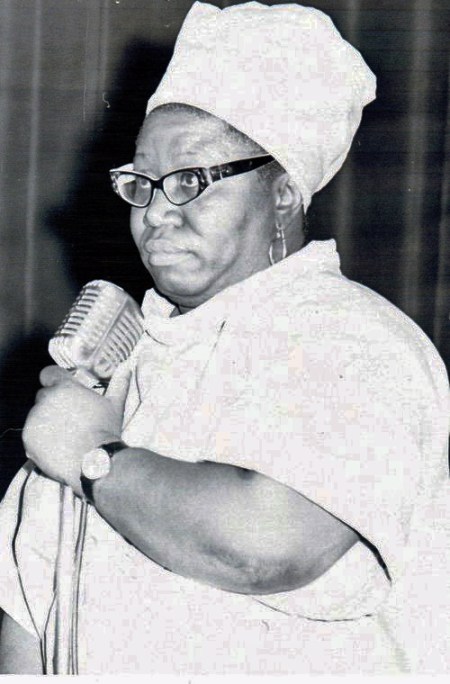
Moving on politically, she used grassroots networks to engage in her struggle for adequate education for her own children — which extended far beyond. While her political positions “resisted theoretical rigidity,” the threads of anti-imperialism and anti-capitalism ran through all of her political work.
Her political work on education grew out of the wretched conditions of the schools her children were forced to attend. Her son was encouraged to take a vocational track despite his academic inclinations. Her daughter’s neighborhood school had enormous class sizes, inexperienced teachers, and meager resources. Mallory was thwarted when she attempted to enroll her daughter in an integrated school outside of her neighborhood. In response, she and other Black mothers, who would become known as the Harlem 9, began to organize grassroots efforts to fight the poor conditions in New York City’s segregated schools. In 1957, the mothers launched one of the first school desegregation lawsuits in New York City, with the help of the NAACP. They sued the city, the Board of Education, and New York State, calling the conditions in their children’s schools “educational abuse.”
The Harlem 9 struggle was not limited to official legal spheres. The renamed Parents in Action Against Educational Discrimination (PAAED) grew to have hundreds of members. The group leafletted, gathered signatures for petitions, held meetings, and organized protests. The PAAED boycotted public schools throughout 1957 and 1958. The parents were eventually charged by the school board with violating the city’s Compulsory Education Law. These boycotts set the stage for the historic 1964 New York City school boycott, in which over 400,000 students refused to go to school.
For Mallory, the effort to end school segregation “had nothing to do with sitting next to white folks.” The struggle was all about the superior resources in the schools that served white families. The mothers saw desegregation as part of the path to self-determination and economic autonomy.
In 1958, in Skipwith v. New York City Schools, the court ruled in favor of the Harlem 9, proclaiming that New York City schools were subjected to discriminatorily inferior education. The case is considered the first win against de facto segregation in the north. The city Board of Education subsequently allowed children to transfer to integrated schools. The mothers’ effort laid the groundwork for future desegregation battles throughout the northeast United States.
Frame-up and Imprisonment
Mallory’s high visibility made her a target of law enforcement as part of a concerted effort to undermine her cause. During the desegregation battles, in an effort to brand her publicly as “disrespectable,” she was jailed for receiving public welfare. State-sanctioned efforts to sabotage Mallory’s work became a running theme throughout her life, galvanizing her to turn toward other Black activists who were developing strategies for self-defense.
After the Board of Education fight, Mallory remained active in Harlem activist circles, where she discussed Black liberation and international solidarity with her comrades. Through her connection to Robert F. Williams, president of a militant NAACP chapter in Monroe, North Carolina, she learned about the armed self-defense he was developing. She traveled to Monroe to support a Freedom Ride protest in August 1961 and was caught up in an effort to frame Williams for kidnapping an older couple. She went into hiding in Cleveland, Ohio, where she set up the Monroe Defense Committee — but received little support from local organizations. After six weeks in hiding, the FBI found her and sent her to jail. Defense committees publicized the case and unsuccessfully fought her extradition to North Carolina.
Mallory faced an all-white jury in her 1962 North Carolina trial; it took the members less than a half-hour to convict her. She was sentenced to 16 to 20 years in prison — a conviction overturned in 1965 due to the exclusion of Black people from the jury.
While in prison, Mallory wrote letters in which she outlined her politics and further articulated her unique contributions to the Black radical tradition. In her “Of Dogs and Men,” she developed an extensive metaphor of Black people as “show dogs,” and warned against the domestication of Black people, arguing for self-determination and liberation on people’s own terms: “Most Negroes do not choose to lead a dog’s life … They do not want scraps from the master’s table, neither crumbs; neither do we choose to be masters — only masters of our fate.”
Mallory’s Legacy
Once released from prison, Mae Mallory never stopped fighting. She put her efforts into raising consciousness around Black liberation and self-determination, and took leadership roles in organizations associated with Black Power politics and Black nationalism. She was briefly the chairwoman of the New York Caucus of the Republic of New Africa (RNA) and engaged the community in important questions about a Black separatist state. A close ally of Malcom X after he left the Nation of Islam, she was in the front row at the Audubon Ballroom when he was assassinated there in February 1965.
In her later years, Mallory sharpened her ideological commitments to internationalism. Any struggle for freedom, she believed, must be global in nature. She was dissatisfied with the co-optation of mainstream civil rights struggles and leaders by politicians in order to mask the capitalists’ exploitative politics with progressivism, and she advocated for the Black masses to connect with global anti-imperialist struggles. She organized against the U.S. occupation of the Dominican Republic and she spoke out consistently against the Vietnam War. Mallory knew that the struggles of Black Americans and exploited people around the world were connected, and that to fight for rights without challenging the capitalist and imperialist context would be to lose the war before it began.
After fighting for other wrongfully imprisoned Black activists at home, she relocated to Tanzania and participated in the Sixth Pan-African Congress in Dar es Salaam. In Tanzania, she was able to work concretely toward her own political ideas beyond the suffocating conditions of American “racial capitalism.” When she returned to the United States, Mallory went back to school and began a radio show called Coping With Life that addressed the daily problems facing Black people She remained active until her death in 2007.
One historian has described Mallory as a “long-distance runner” who fought to create a better world at every stage of her life, shaping the wider movement with each step. Because she refused to fit into any one ideological box, her story could easily be written out of the broader narrative. But it’s important to celebrate Mallory’s legacy and ensure that her story is not forgotten.
Mallory defined her strand of the Black radical tradition on her own terms. She teaches important lessons to contemporary revolutionaries. A working-class, divorced Black woman, she refused to “adjust” to a society that exploited her — hence her self-description as “maladjusted” — and resisted the categories that defined the politics of her contemporaries. She work with other activists with whom she disagreed, but never allied herself with the white supremacist capitalist class or its politicians. Her fights using both mainstream methods and those beyond, and within and across organizations and national borders, demonstrate the power of organizing the working class to solve the problems we face.
Mae Mallory understood the urgent need for international solidarity. “I’m not interested in harmony,” she once said. “I’m interested in freedom.”


